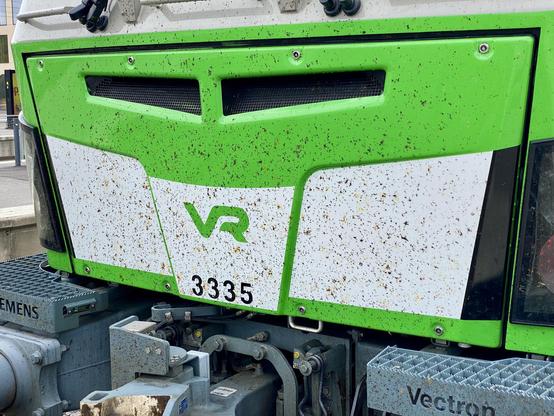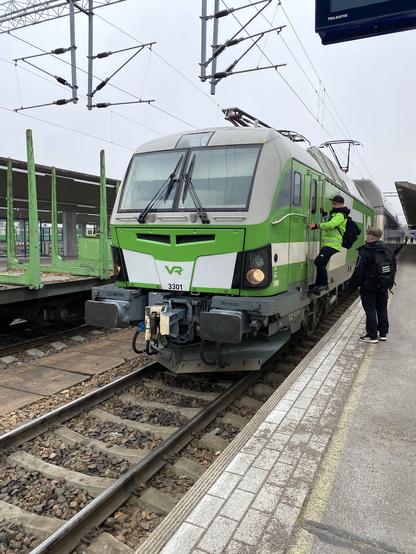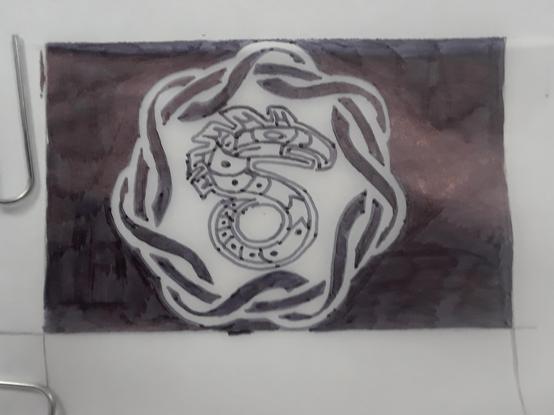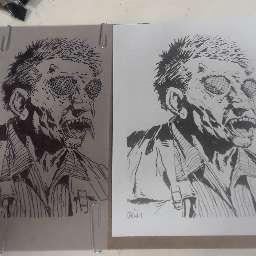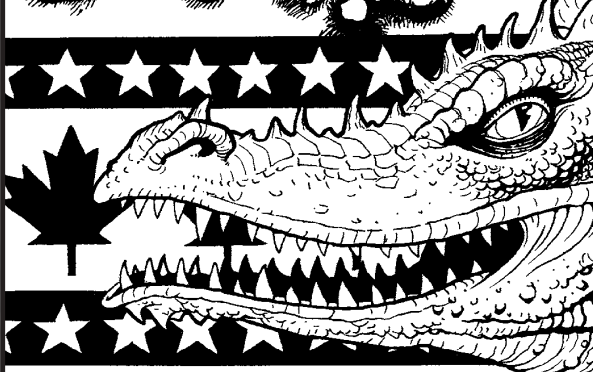Wer #LiedUndChanson auf #SR3 am Donnerstag abend vermisst: Die Sendung wandert aufgrund des neuen #ARD-Sendeschemas für die #Schlagerwellen unter der Woche auf den #Samstagabend ab 1804 Uhr.
#SR3
Sr3 3301 valmistautuu työntämään IC63:a Kouvolasta pohjoiseen.
Opin juuri, ettei numeroltaan ensimmäinen Sr3 ollut ensimmäinen Suomeen tullut, vaan edeltä tulivat 3302–4 ja tämä vasta heinäkuussa 2016.
Siis jo yhdeksän vuotta on näitäkin meikäläisillä radoilla liikkunut! Aika rientää kuin hirvi.
@Radixi @markus_netzpolitik @neuSoM @DJV
Guter kommentar von
#SR3 Florian Mayer [SR_X](https://www.sr.de/sr/sr3/themen/sr_3-land/kommentar_diskussion_um_x_100.html)
I couldn't find a #Flag for the city of #Seattle in the #setting of #ShadowRun, so I made my own, incorporating parts of the #SeattleFlag and the Shadowrun #Logo.
This is now #Canon in my head and if there IS another flag for Seattle in Shadowrun, I will not acknowledge it.
#TTRPG
#SR3
#ThirdEdition
#Scifi
#Fantasy
#CyberPunk
#Dystopia
And another image #Immortalized for my #scrapbook.
Seems more appropriate for my #WorldofDarkness scrapbook than my #Sr3 one, but I can always make another #trace.
And just in case this wasn't confusing ENOUGH, turns out some versions of the #UCAS #Flag DO have the #stars and #mapleleaves pointing in the same way, or at least this #illustration (by someone named #Prescott) on page 23 of the #SR3 #Rulebook did.
Oh ShadowRun, you make the plots of #Alias and #Wrestling look easy to follow by comparison.
#ShadowRun
#ThirdEdition
#TTRPG
#Dunklezhan
#Dragon
#MapleLeaf
So give #Humans +1 Inteligence or Charisma? Or both? Or something else?
So I apparently AM the only person who is more interested in using the #Priority system, rather than #pointbuying, for #CharacterCreation. Or at least the only person here interested enough to speak out on it.
I'm not upset, just disappointed (actually, I'm also a little confused, I SWEAR the CC for 6th edition was also Priority).
Either way, until I find my Companion book (assuming I didn't sell it), the Priority system is all I have.
Nichelle Wright “Star Rookies” Upper Deck 2021 Card #SR3
Set: Upper Deck 2021 Card# SR-3 Sale There is a sale for all Marvel Cards. You can pick any card marked $4.25 and get the 2nd for 50% off. The code is Marvel50. If you want 3, you will receive 60% off the 2nd and 3rd. The code is Marvel 60. I will be adding more to select from in the next 3 -4 months. A professional company did not verify this card. However, you can rest assured that it's in mint condition, with…
https://allthatyouwant3536.com/product/nichelle-wright-star-rookies-upper-deck-2021-card-sr3/
#Fenniarail presented yesterday photos from the Siemens factory in Munich: first #electric #locomotive for a private operator on the state network in #Finland! Approval process work at the factory. #Vectron a.k.a. #Sr3, as for VR.
https://twitter.com/fenniarail/status/1696161636766109878?s=20
Our #ArriflexSRBatteryAdapter allows the use of standard Gold Mount or V-Mount batteries on the #Arri #SR2 or #SR3 #16mm cameras.
#arriflex #filmcamera #cinematographylife #cinematographer #cinematography #camop #cameraassistant #cameraoperator #cameraporn #batteryadapter #goldmount #goldmountbattery #vmount #vmountbattery #rencherindustries
Google’s New AI Photo Upscaling Tech is Jaw-Dropping
Photo enhancing in movies and TV shows is often ridiculed for being unbelievable, but research in real photo enhancing is actually creeping more and more into the realm of science fiction. Just take a look at Google's latest AI photo upscaling tech.
In a post titled "High Fidelity Image Generation Using Diffusion Models" published on the Google AI Blog (and spotted by DPR), Google researchers in the company's Brain Team share about new breakthroughs they've made in image super-resolution.
In image super-resolution, a machine learning model is trained to turn a low-res photo into a detailed high-res photo, and potential applications of this range from restoring old family photos to improving medical imaging.
Google has been exploring a concept called "diffusion models," which was first proposed in 2015 but which has, up until recently, taken a backseat to a family of deep learning methods called "deep generative models." The company has found that its results with this new approach beat out existing technologies when humans are asked to judge.
The first approach is called SR3, or Super-Resolution via Repeated Refinement. Here's the technical explanation:
"SR3 is a super-resolution diffusion model that takes as input a low-resolution image, and builds a corresponding high resolution image from pure noise," Google writes. "The model is trained on an image corruption process in which noise is progressively added to a high-resolution image until only pure noise remains.
"It then learns to reverse this process, beginning from pure noise and progressively removing noise to reach a target distribution through the guidance of the input low-resolution image."
Before (left) and after (right) upscaling with SR3.
SR3 has been found to work well on upscaling portraits and natural images. When used to do 8x upscaling on faces, it has a "confusion rate" of nearly 50% while existing methods only go up to 34%, suggesting that the results are indeed photo-realistic.
Before (left) and after (right) upscaling with SR3. Before (left) and after (right) upscaling with SR3.
Here are other portraits upscaled from low-resolution originals:
A selection of portraits upscaled from low-res originals by AI. A selection of portraits upscaled from low-res originals by AI.
Once Google saw how effective SR3 was in upscaling photos, the company went a step further with a second approach called CDM, a class-conditional diffusion model.
"CDM is a class-conditional diffusion model trained on ImageNet data to generate high-resolution natural images," Google writes. "Since ImageNet is a difficult, high-entropy dataset, we built CDM as a cascade of multiple diffusion models. This cascade approach involves chaining together multiple generative models over several spatial resolutions: one diffusion model that generates data at a low resolution, followed by a sequence of SR3 super-resolution diffusion models that gradually increase the resolution of the generated image to the highest resolution."
Google has published a set of examples showing low-resolution photos upscaled in a cascade. A 32×32 photo can be enhanced to 64×64 and then 256×256. A 64×64 photo can be upscaled to 256×256 and then 1024×1024.
As you can see, the results are impressive and the final photos, despite having some errors (such as gaps in the frames of glasses), would likely pass as actual original photographs for most viewers at first glance.
"With SR3 and CDM, we have pushed the performance of diffusion models to state-of-the-art on super-resolution and class-conditional ImageNet generation benchmarks," Google researchers write. "We are excited to further test the limits of diffusion models for a wide variety of generative modeling problems."
#news #software #technology #ai #cdm #diffusionmodel #google #machinelearning #neuralnetwork #research #sr3 #upscale #upscaling
